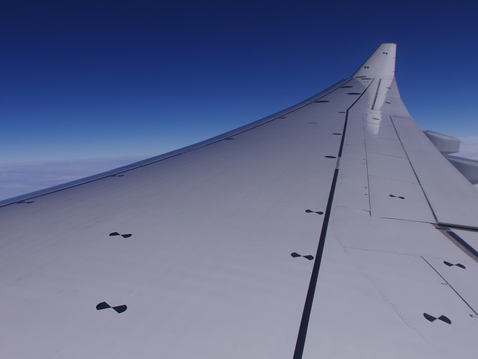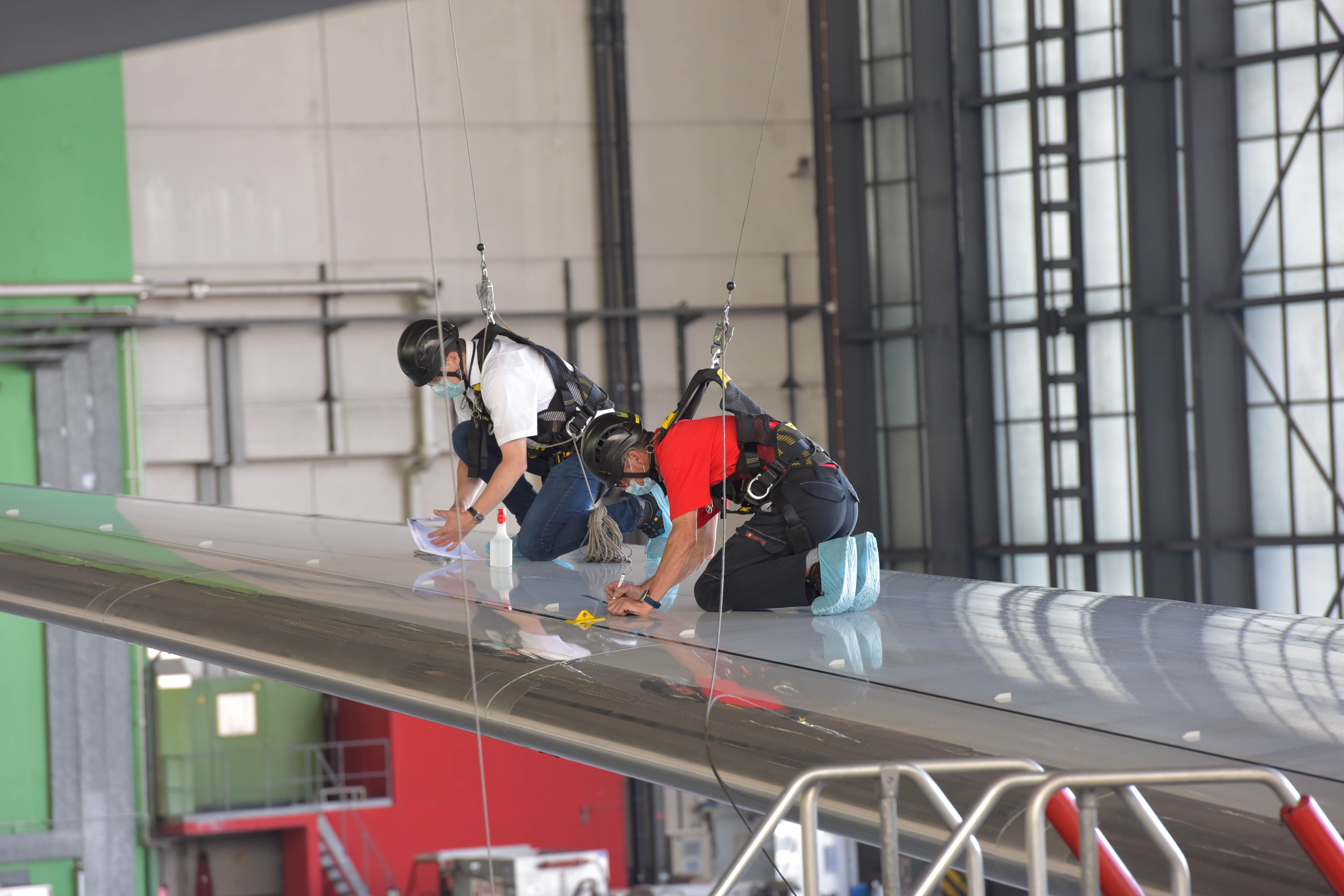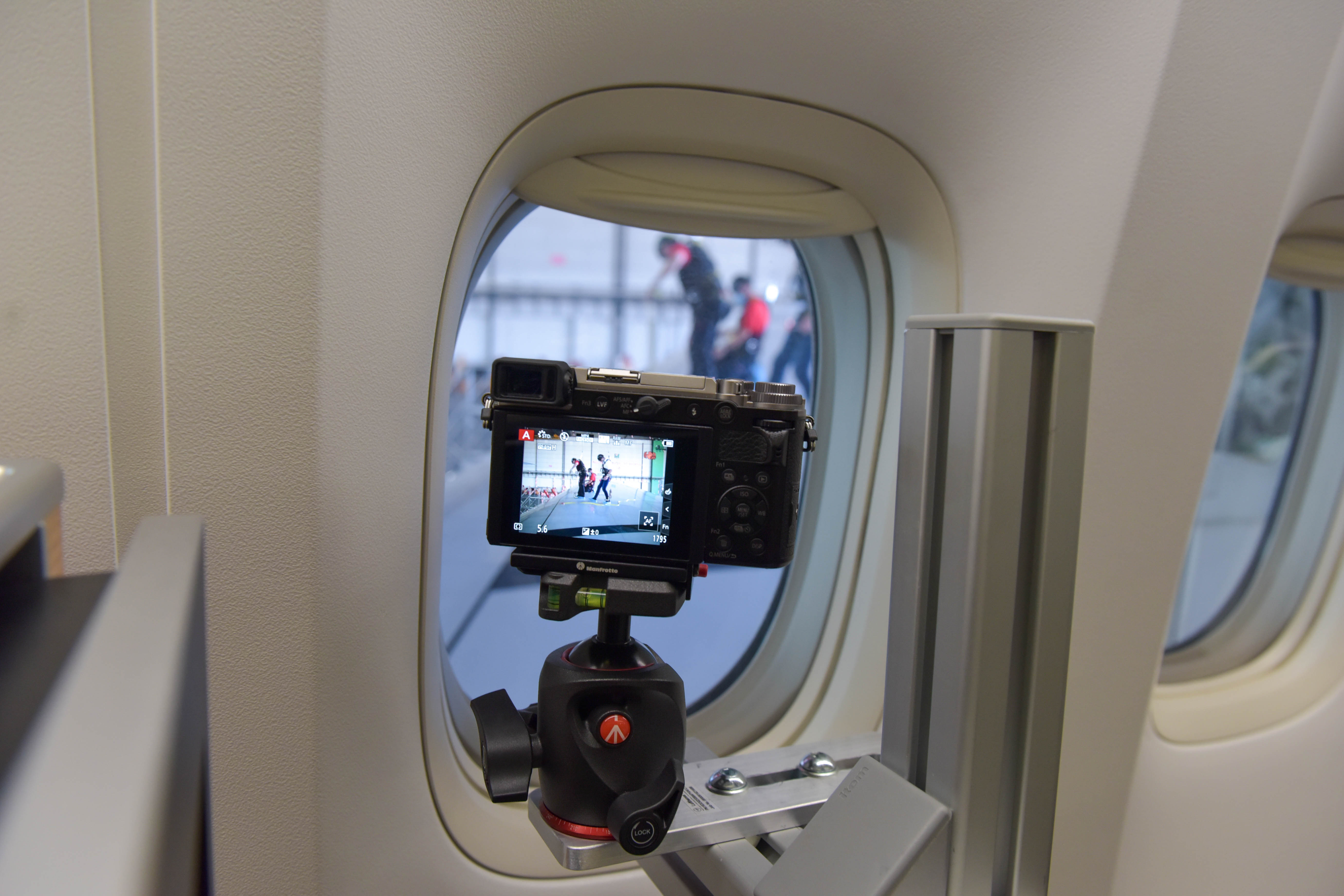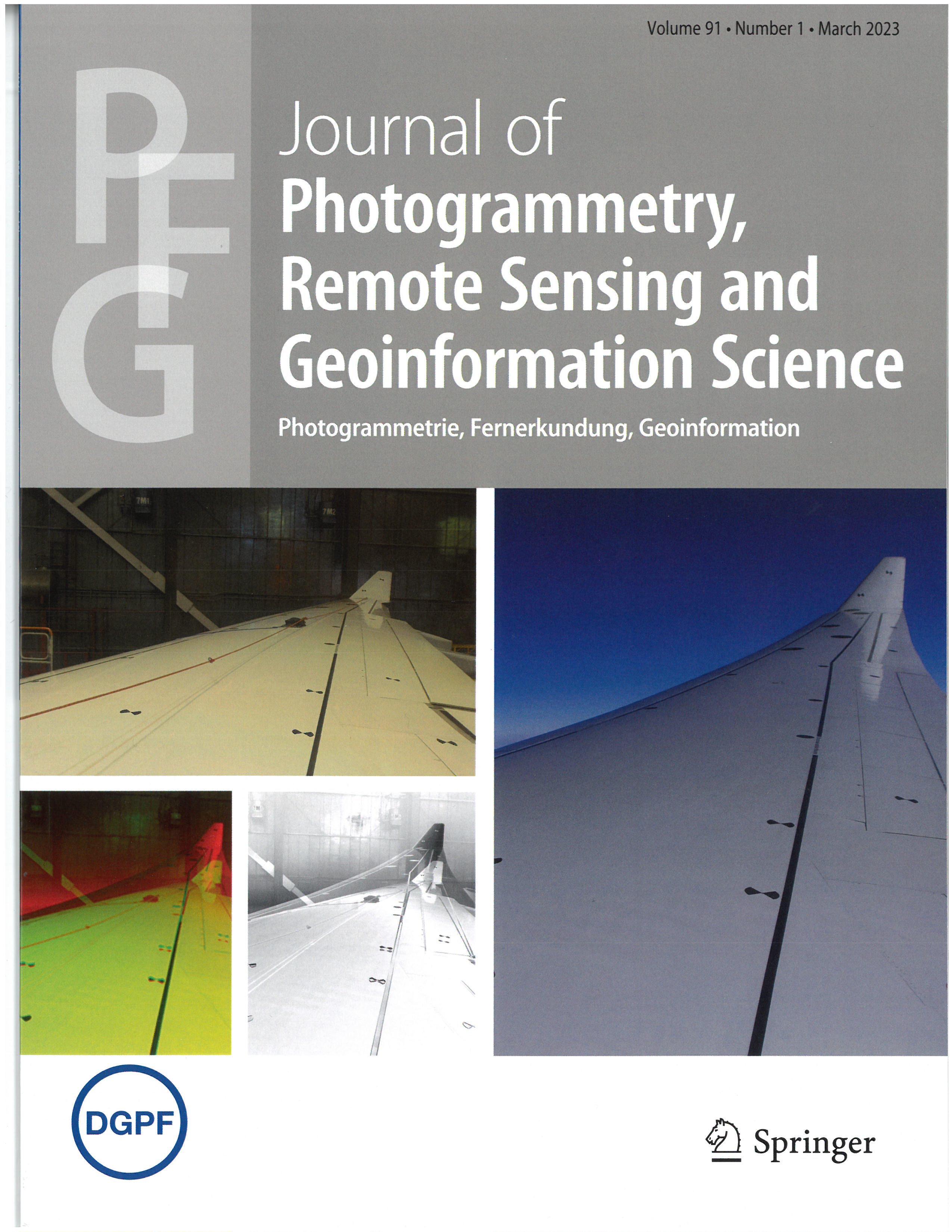Measuring the wing shape in midair
Making aircraft more fuel-efficient is one of the aviation industry's most important goals. To this end, Lufthansa Technik uses AeroSHARK, a technology inspired by sharkskin, which significantly reduces frictional drag and thus emissions. To attach the coating optimally, however, it is necessary to conduct flow simulations which take the actual wing shape during flight into account. Measuring this is a challenge - and a specialty of the Fraunhofer Institute of Optronics, System Technologies and Image Exploitation IOSB, as successful measurements flights by Lufthansa Technik have shown.
One of the tasks of aeronautical engineers is the optimization of aircraft aerodynamics. To do this, they perform flow analyses with 3D models of the aircraft. A classical 3D model of the stationary aircraft can be created in the hangar using established metrological methods. However, this is not sufficient to understand how the wings behave during flight since part of the tank load is in the wings and is consumed during a flight.



The wings lift several meters in flight
The aerodynamic uplift and the change in tank load influence the curvature: The wings deflect upward by several meters, depending on the flight section. Using models that reflect the actual aircraft shape during flight, computer-aided flow simulations (computational fluid dynamics, or CFD for short) of the sharkskin technology can be carried out to determine its optimum position and orientation.
Dr. Karsten Schulz heads the Scene Analysis (SZA) department at Fraunhofer IOSB and explains why an innovative approach is needed: "Usually, at least two cameras are needed to create such a 3D model. However, the conditions for stereophotogrammetry are often not met, for example because it is not possible in the passenger cabin to correctly align multiple cameras with a view onto a wing. Our new measurement method enables accurate measurement with only one camera. This is an innovation for model creation in difficult use cases."
There is only room for one camera in the cabin
A particular challenge of in-flight measurement is that it has to take place during scheduled flight operations in order to save costs and resources. The measurement equipment has to be placed in the cabin and measurements have to be taken through window panes, the effect of which is not always known in advance. Since distances cannot be determined with a single camera, existing solutions envisage the use of multi-camera systems. However, the installation of such complex systems in wide-bodied aircraft on scheduled flights with passengers is a hopeless undertaking due to the required space.
Innovative photogrammetry method for 3D models
The monocular approach developed at Fraunhofer IOSB solves this problem: The missing distance information is obtained by additional measurements on the ground. For this purpose, the upper surface of the wing is covered with numerous measurement marks whose positions are measured with the help of a tachymeter. A single camera permanently mounted in the aircraft cabin records and locates these marks several times an hour in different flight conditions. The rest is mathematics: A model for wing deflection is based on the assumption that arc lengths do not change during bending; at the same time, length changes due to temperature fluctuations can be taken into account mathematically. The positions of the measurement marks can be determined in the measurement images and converted into spatial coordinates. On-site camera calibration takes into account the influence of the window panes; the distance between the camera and the target marks is finally obtained by solving an optimization problem.
"We were able to successfully apply our patent-pending photogrammetry method with the support of an expert from the Karlsruhe Institute of Technology (KIT)," says Dr. Jochen Meidow, head of on-site surveying and a scientist at Fraunhofer IOSB. "On a regular flight from Zurich to San Francisco and back, we were able to obtain the 3D model of the wing of a Boeing 777-300ER and make it available to Lufthansa Technik. Our method can also be used in other contexts where exact measurement is difficult - interested parties with individual problems are welcome to contact us!"

Oliver Oeser, project manager for aircraft modification at Lufthansa Technik, provides further background on the use of AeroSHARK technology in a blog article on LinkedIn. Details of the photogrammetric approach have been published in the current issue of the „Journal of Photogrammetry, Remote Sensing and Geoinformation Science“ (Volume 91 Number 1 March 2023).
Last modified:
 Fraunhofer Institute of Optronics, System Technologies and Image Exploitation IOSB
Fraunhofer Institute of Optronics, System Technologies and Image Exploitation IOSB 